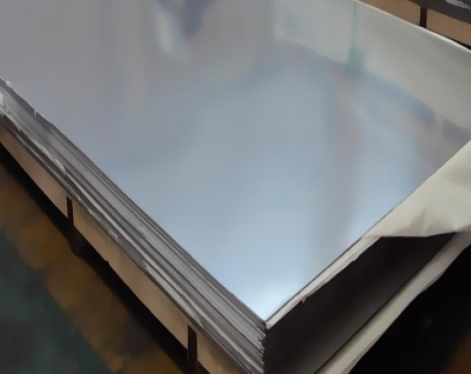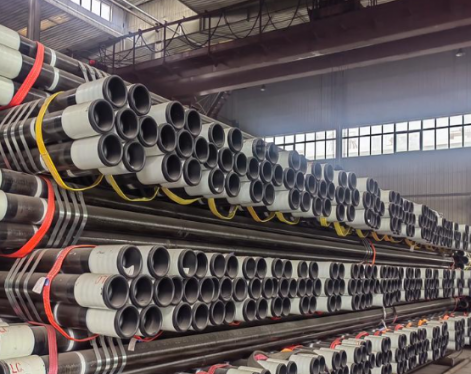What is HS code?
HS code is an internationally accepted commodity code, the full name is "Goods and Services Tariff", and is the commodity classification standard recommended by the World Tariff and Trade Organization (WTO). The HS code consists of 6 digits and is used to identify different types of goods.
Cold rolled low carbon steel plate:
Low carbon steel plates are a type of material that is widely used. They are divided into ordinary low carbon steel plates and special steel plates, including low alloy high-strength steel and corrosion-resistant and heat-resistant clad steel plates. Ordinary low-carbon steel plates are divided into two types: cold-rolled and hot-rolled. Cold-rolled steel plates have good surface quality and precise thickness dimensions, and are mostly used to manufacture car bodies and the like. Hot-rolled plates are mostly used to make vehicle frames and the like. Hot rolling refers to rolling steel plates at high temperatures (normal temperature is 1000°C-1200°C), and cold rolling refers to rolling steel plates at room temperature or close to room temperature.

Low carbon cold rolled steel plate is a low carbon steel made by cold rolling. Its characteristics are: high mechanical properties, smooth surface, high hardness, high strength, and good tensile, compressive and bending properties. At the same time, low-carbon cold-rolled steel plates consume less energy during the manufacturing process, so they are also called "green steel" and are widely used in automobiles, home appliances, electronics, construction and other fields.
When cold-rolled steel plates are used to form parts, the material must have a large degree of plastic deformation and there must be no wrinkles, cracks, etc. on the surface. For different parts, use different grades of steel plates. For example, Japan’s automotive steel plate standards are divided into three categories. The first category (SPCC) is ordinary cold-rolled steel plate, usually rolled by boiling steel. The second category (SPCD) is rolled steel plate. The third category (SPCE or SPCEN ) is a cold-rolled steel plate for deep drawing.
HS code of cold rolled low carbon steel plate:
The HS codes of cold-rolled low carbon steel plates may include the following:
1. 72091510: High-strength cold-rolled coil with thickness ≥3mm
2. 72091590: Other cold-rolled coils with thickness ≥3mm
3. 72091610: 3mm>thickness>1mm high strength cold rolled coil
4. 72091690: 3mm>thickness>1mm low strength cold rolled coil
5. 72091710: 1mm≥thickness≥0.5mm high-strength cold-rolled coil
6. 72091790: 1mm≥thickness≥0.5mm low-strength cold-rolled coil
7. 72091810: Non-alloy steel cold-rolled coils with thickness <0.3mm
8. 72091890: 0.3mm≤thickness<0.5mm non-alloy steel cold rolled coil
9. 72092500: Cold-rolled non-coiled materials with thickness ≥3mm
10. 72092600: 3mm>thickness>1mm cold-rolled non-coiled material
11. 72092700: Cold-rolled non-coiled materials with thickness ≥ 1mm ≥ 0.5mm
12. 72092800: Cold-rolled non-coiled materials with a thickness less than 0.5mm
13. 72099000: Other cold rolled iron or non-alloy steel wide flat rolled products
It should be noted that the HS code may vary depending on product specifications, uses, origin and other factors. Therefore, in actual operations, it is recommended to check with relevant departments or professional institutions for accurate HS codes based on specific circumstances.
Conclusion:
This article introduces the HS code of cold-rolled low carbon steel plates, hoping to help readers better understand and use the HS code. At the same time, readers are also reminded that in actual operations, they should check the accurate HS code according to the specific situation to avoid errors.
HS code is an internationally accepted commodity code, the full name is "Goods and Services Tariff", and is the commodity classification standard recommended by the World Tariff and Trade Organization (WTO). The HS code consists of 6 digits and is used to identify different types of goods.
Cold rolled low carbon steel plate:
Low carbon steel plates are a type of material that is widely used. They are divided into ordinary low carbon steel plates and special steel plates, including low alloy high-strength steel and corrosion-resistant and heat-resistant clad steel plates. Ordinary low-carbon steel plates are divided into two types: cold-rolled and hot-rolled. Cold-rolled steel plates have good surface quality and precise thickness dimensions, and are mostly used to manufacture car bodies and the like. Hot-rolled plates are mostly used to make vehicle frames and the like. Hot rolling refers to rolling steel plates at high temperatures (normal temperature is 1000°C-1200°C), and cold rolling refers to rolling steel plates at room temperature or close to room temperature.

Low carbon cold rolled steel plate is a low carbon steel made by cold rolling. Its characteristics are: high mechanical properties, smooth surface, high hardness, high strength, and good tensile, compressive and bending properties. At the same time, low-carbon cold-rolled steel plates consume less energy during the manufacturing process, so they are also called "green steel" and are widely used in automobiles, home appliances, electronics, construction and other fields.
When cold-rolled steel plates are used to form parts, the material must have a large degree of plastic deformation and there must be no wrinkles, cracks, etc. on the surface. For different parts, use different grades of steel plates. For example, Japan’s automotive steel plate standards are divided into three categories. The first category (SPCC) is ordinary cold-rolled steel plate, usually rolled by boiling steel. The second category (SPCD) is rolled steel plate. The third category (SPCE or SPCEN ) is a cold-rolled steel plate for deep drawing.
HS code of cold rolled low carbon steel plate:
The HS codes of cold-rolled low carbon steel plates may include the following:
1. 72091510: High-strength cold-rolled coil with thickness ≥3mm
2. 72091590: Other cold-rolled coils with thickness ≥3mm
3. 72091610: 3mm>thickness>1mm high strength cold rolled coil
4. 72091690: 3mm>thickness>1mm low strength cold rolled coil
5. 72091710: 1mm≥thickness≥0.5mm high-strength cold-rolled coil
6. 72091790: 1mm≥thickness≥0.5mm low-strength cold-rolled coil
7. 72091810: Non-alloy steel cold-rolled coils with thickness <0.3mm
8. 72091890: 0.3mm≤thickness<0.5mm non-alloy steel cold rolled coil
9. 72092500: Cold-rolled non-coiled materials with thickness ≥3mm
10. 72092600: 3mm>thickness>1mm cold-rolled non-coiled material
11. 72092700: Cold-rolled non-coiled materials with thickness ≥ 1mm ≥ 0.5mm
12. 72092800: Cold-rolled non-coiled materials with a thickness less than 0.5mm
13. 72099000: Other cold rolled iron or non-alloy steel wide flat rolled products
It should be noted that the HS code may vary depending on product specifications, uses, origin and other factors. Therefore, in actual operations, it is recommended to check with relevant departments or professional institutions for accurate HS codes based on specific circumstances.
Conclusion:
This article introduces the HS code of cold-rolled low carbon steel plates, hoping to help readers better understand and use the HS code. At the same time, readers are also reminded that in actual operations, they should check the accurate HS code according to the specific situation to avoid errors.









